We Went to Hawaii! (ハワイー に いきました)
Several years ago (2019), I took my kids to Maui, and we ended up driving to the NW shore of the island (near Slaughterhouse Beach / Fleming Beach)[1], and we continued on to eventually park on the side of the road next to a nature reserve. We ended up walking through the reserve to a very rocky beach to snorkel.
It was very random in that we didn't know where we were going, nor where we would end up.
Up until then, we had only ever snorkeled on sandy, shallow beaches where the water was cloudy and there weren't a lot of fish (and little to no coral).
This place we found in Maui was a wonderland. It was like something out of a BBC nature documentary. It was rocky and became deep right away (so the water was clear). And it was a protected bay, so the currents were a minimum. The fish, coral, and anemones were simply spectacular and it was a memory that's been permanently etched into my mind.
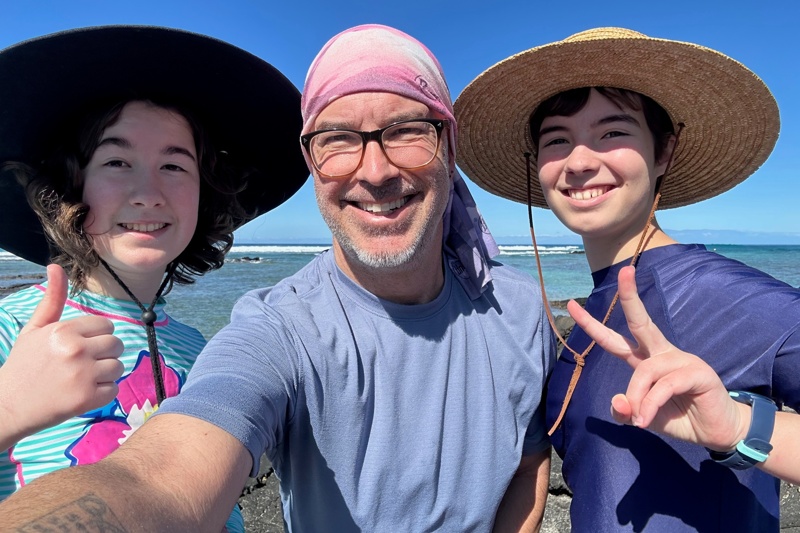
Since then, I've been on the look-out for a similar experience. We went to Kauai (2022), but only found sandy beaches[2] (and the rip tides were just wicked).
And even on our visit to The Big Island, we began at Nanuku Inlet and Puako Bay (on the reef part), and those were fine (and sometimes even great), but not like Maui.
But then we found it: Keylakekua Bay. We hiked down the two mile trail to the Captain Cook monument[3] and jumped into the water. It was spectacular. It was otherworldly. Because I had repurposed an old trail-running camera to use for snorkeling[4], we had an underwater camera with us.
My claim, which I'm sticking with, is that if everybody could see what's below the surface at places like Keylakekua Bay, everyone would become (1) and environmentalist and (2) would join a "Keep Plastic Out of the Ocean" organization, e.g.: The Ocean Cleanup Project.
Hawaii is a national treasure (and arguably also a global treasure).
Here are my favorite snorkeling photos. They're mostly from Keylakekua Bay, but there are some from Puako Bay (the reef section) and maybe even one from Nanuku Inlet.

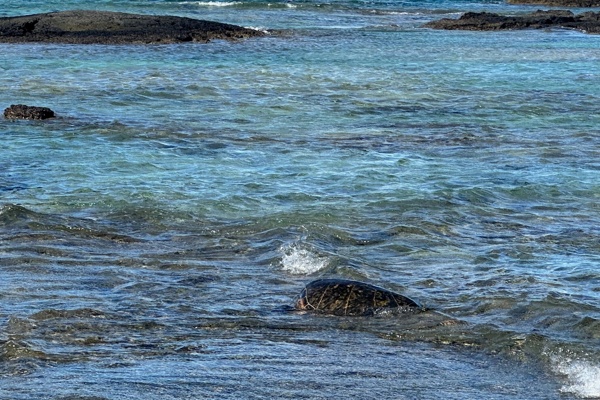
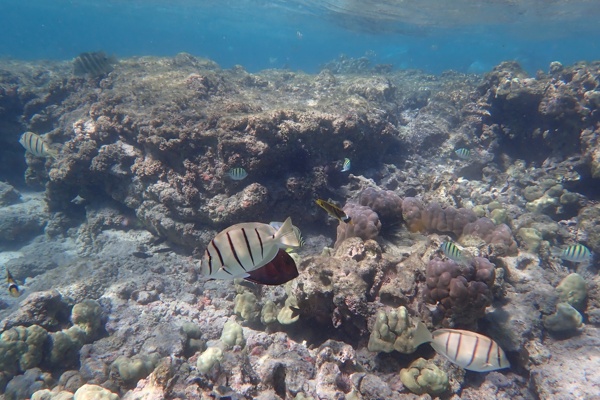
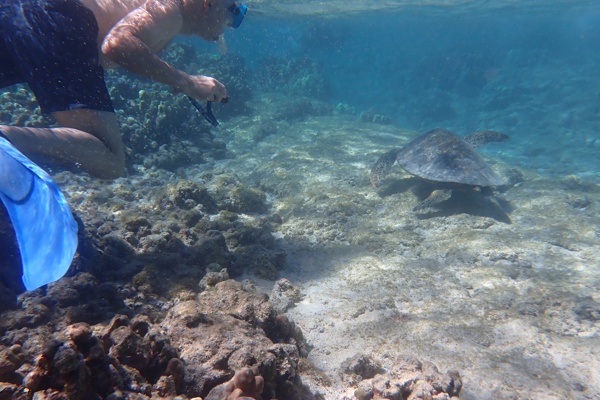

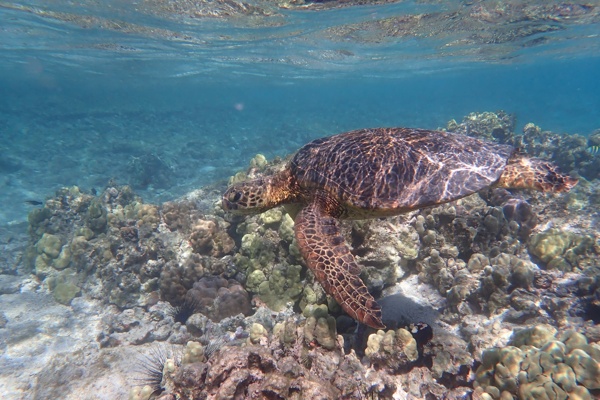
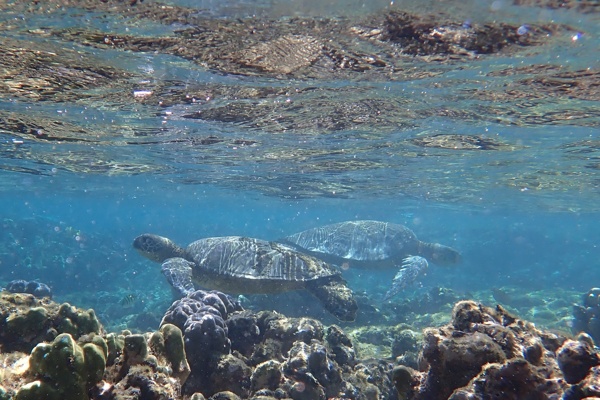
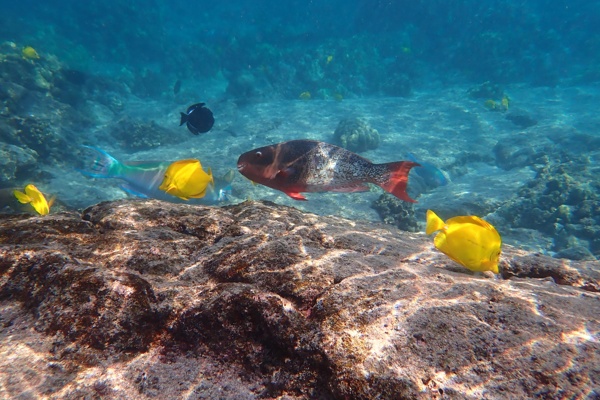
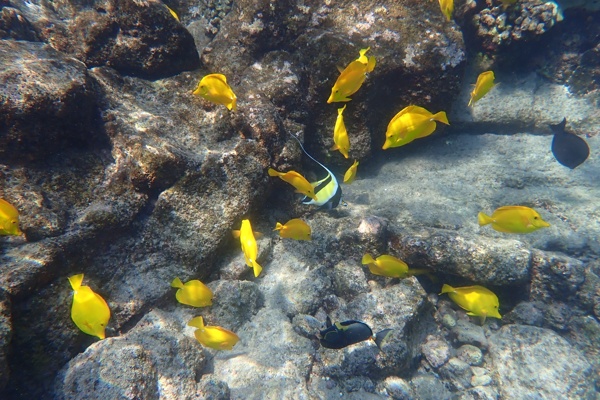
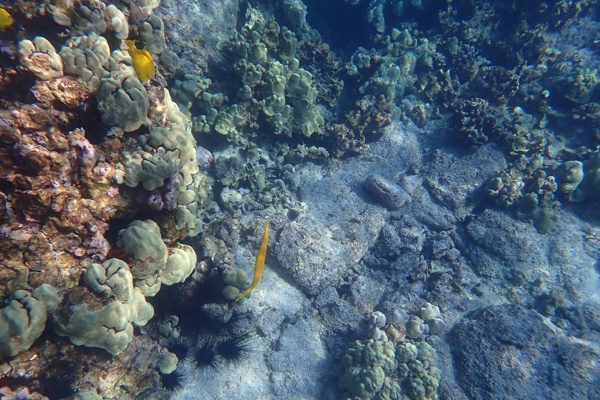
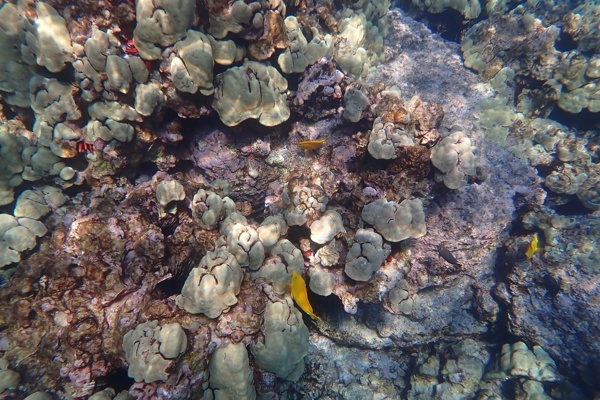


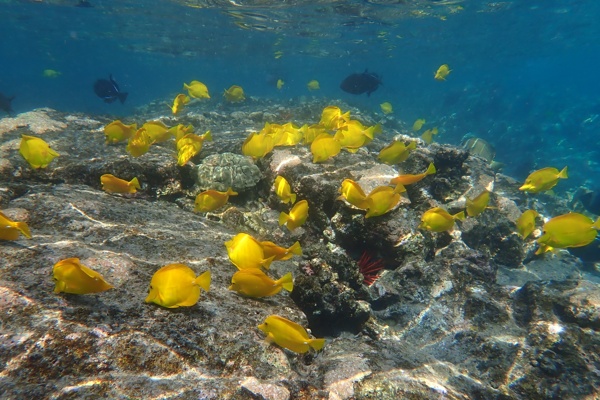
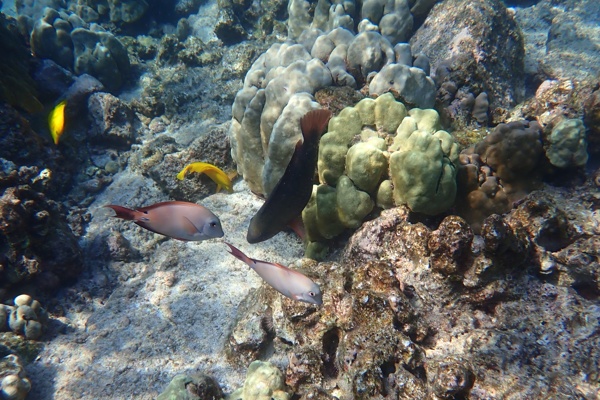
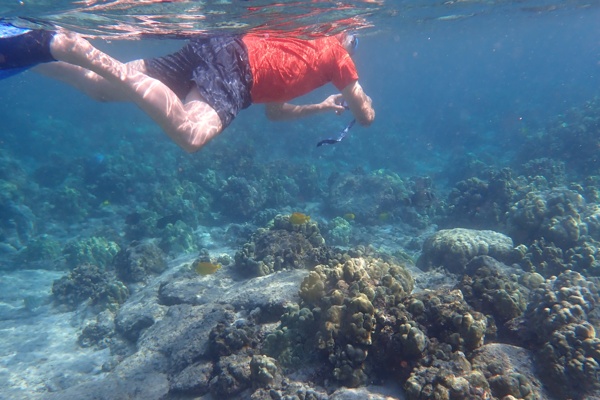
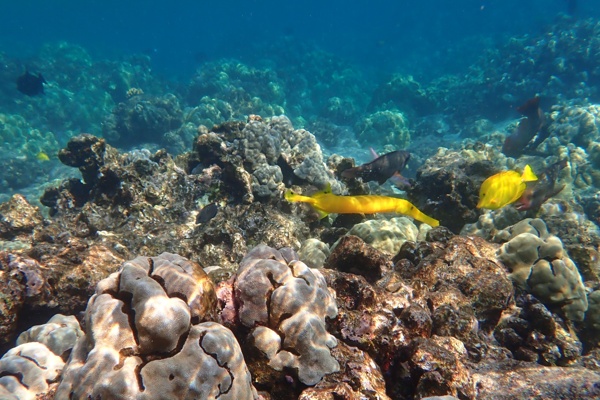
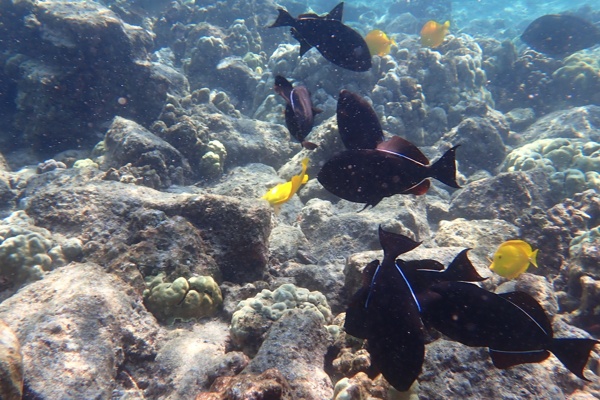
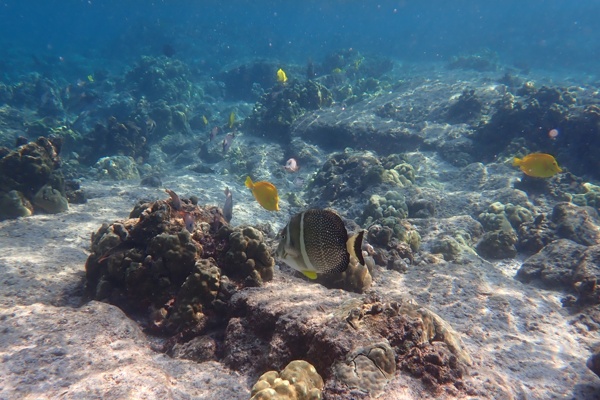
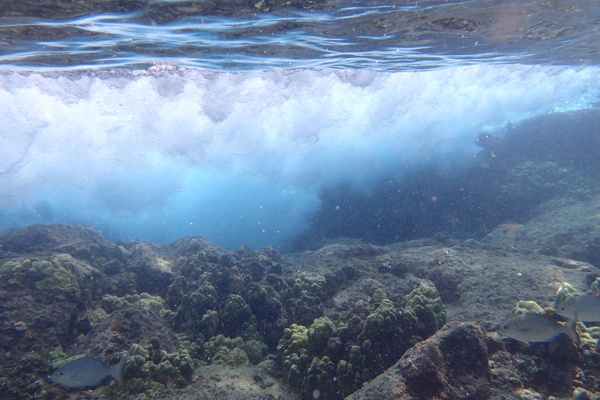
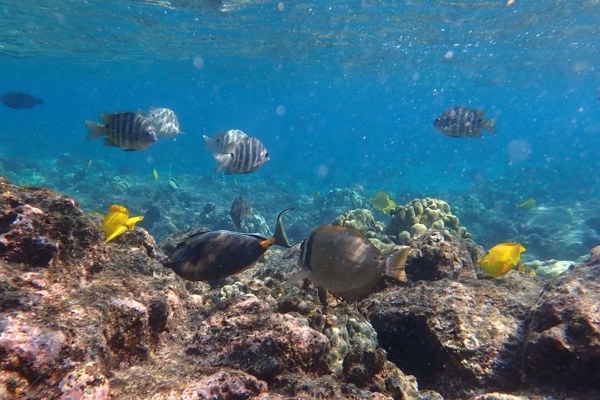
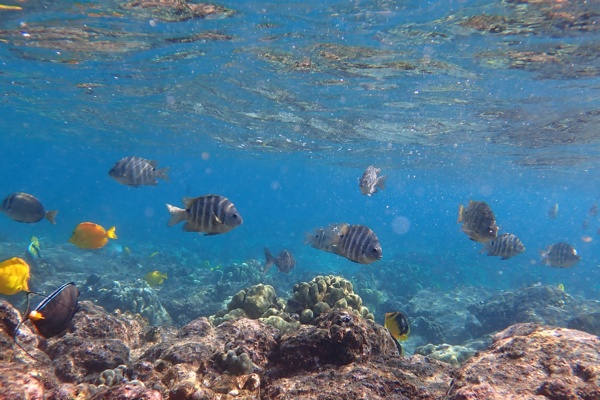
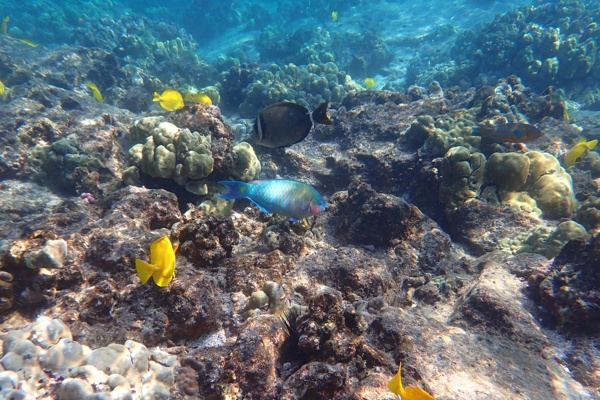
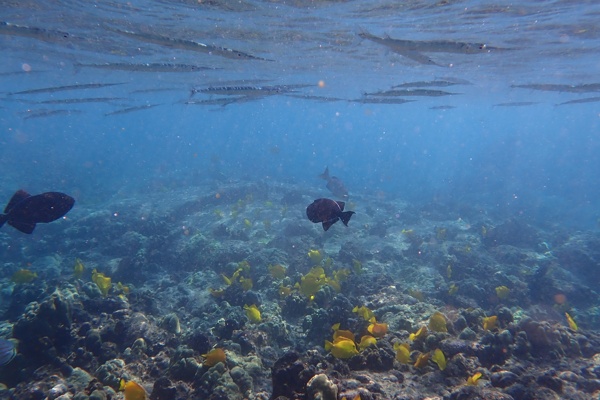
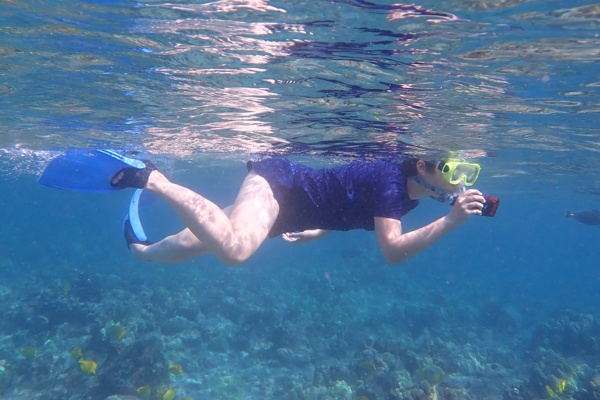

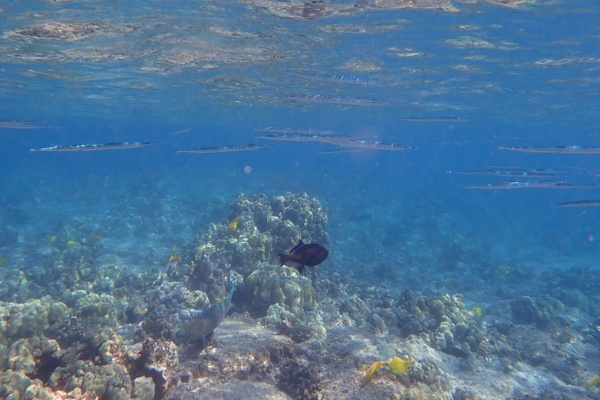
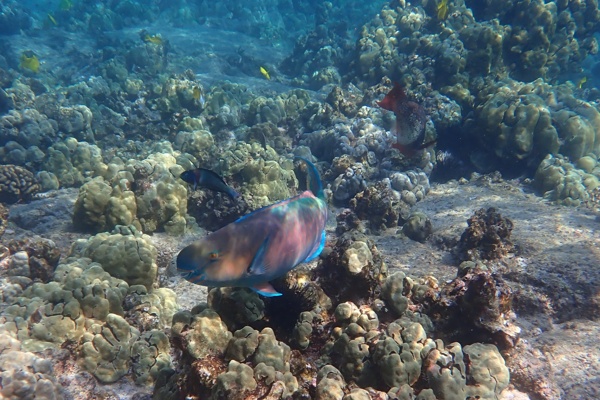
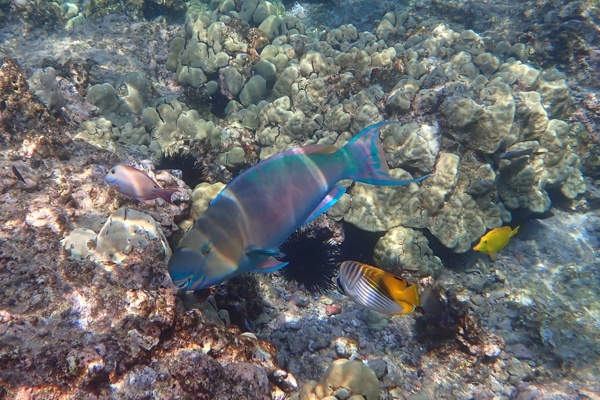

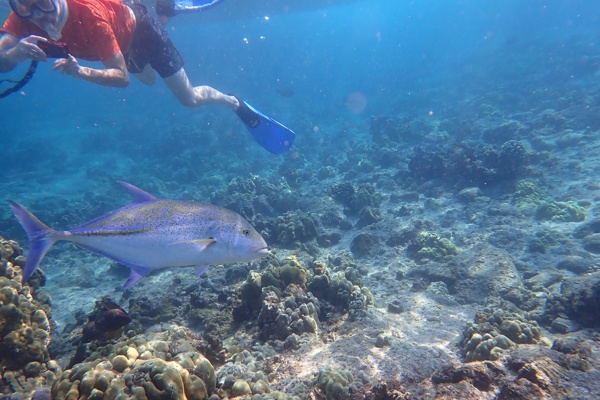
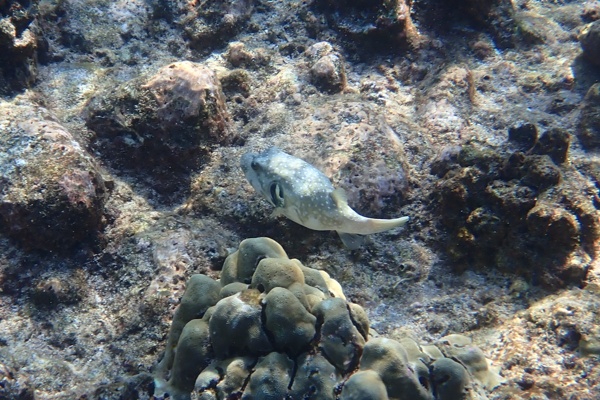
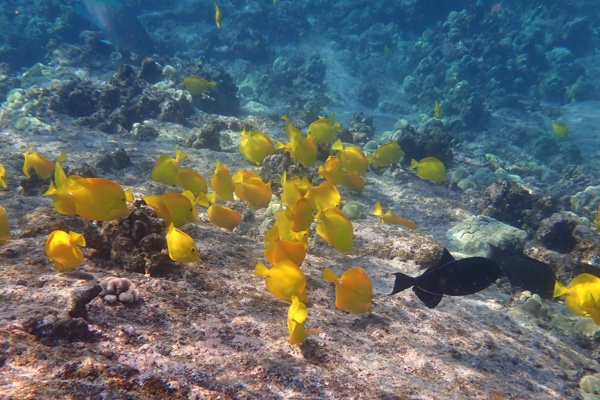
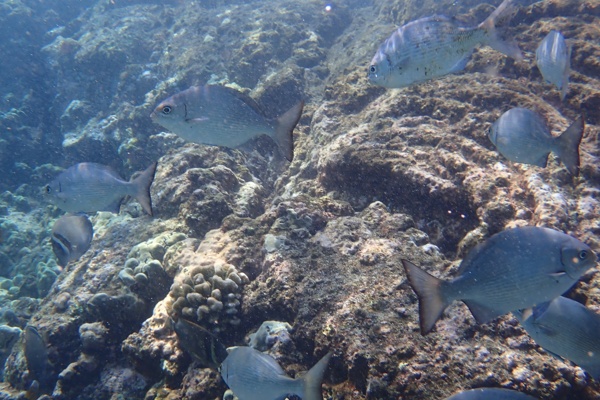
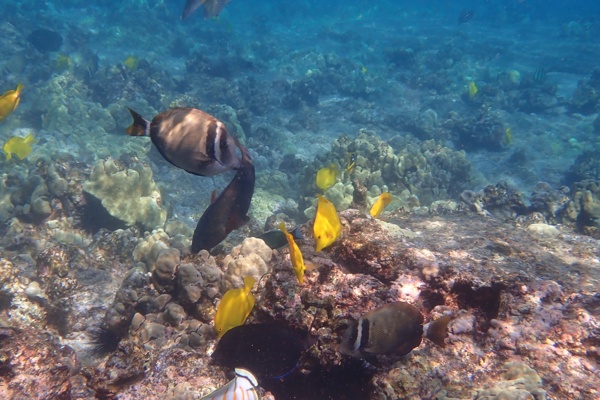
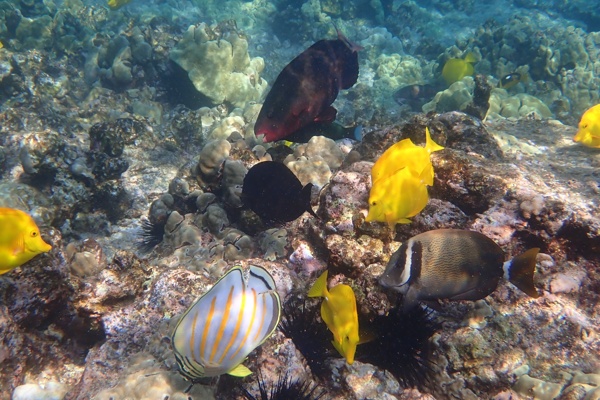
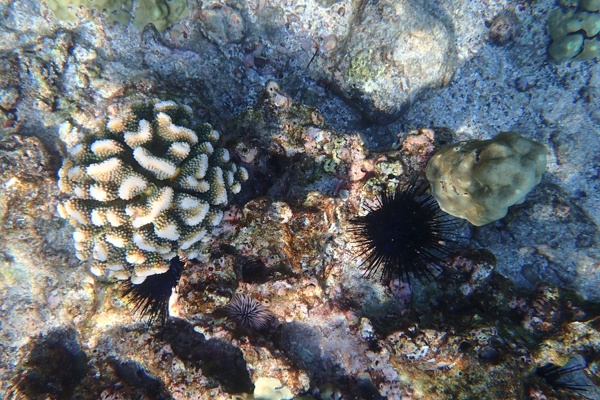
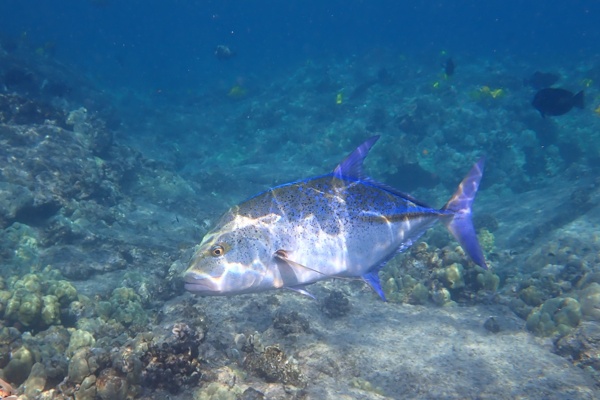
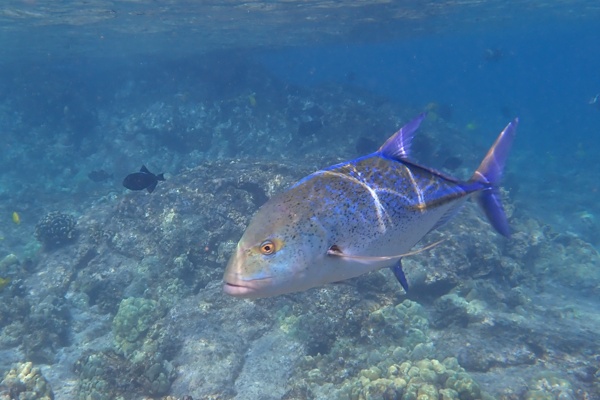
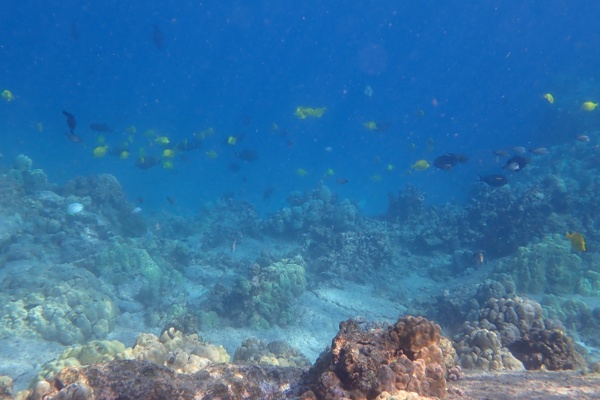
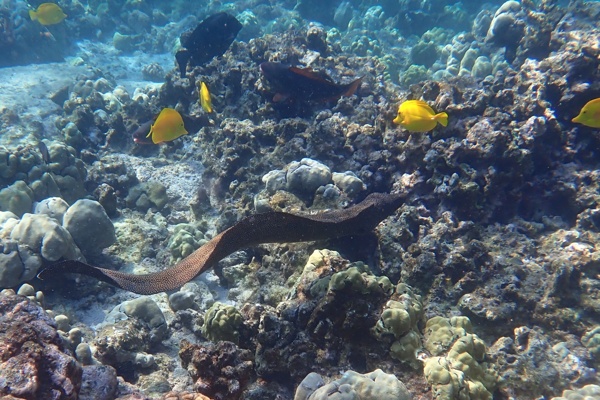
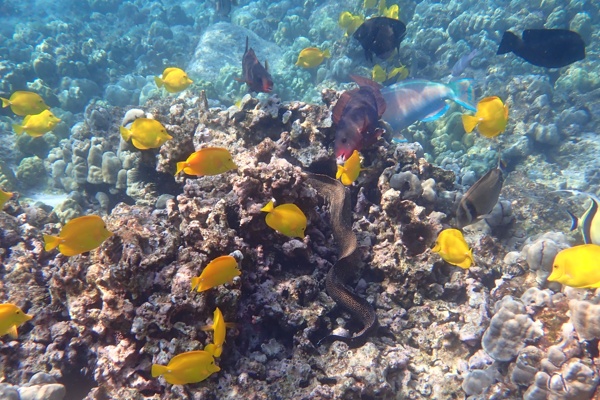
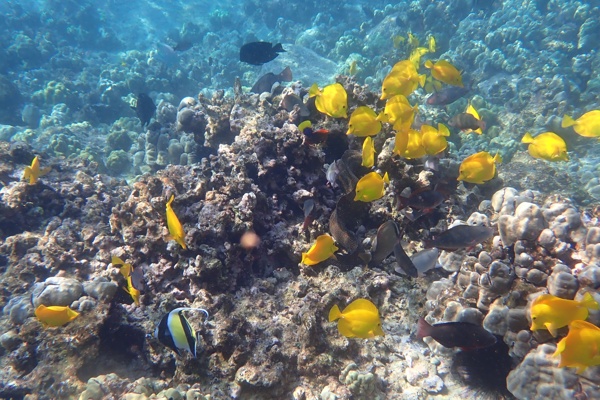

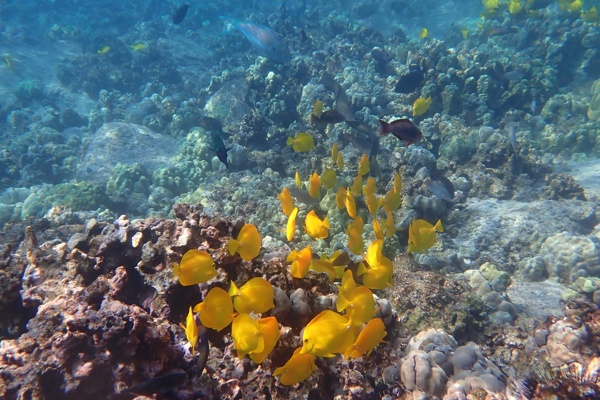
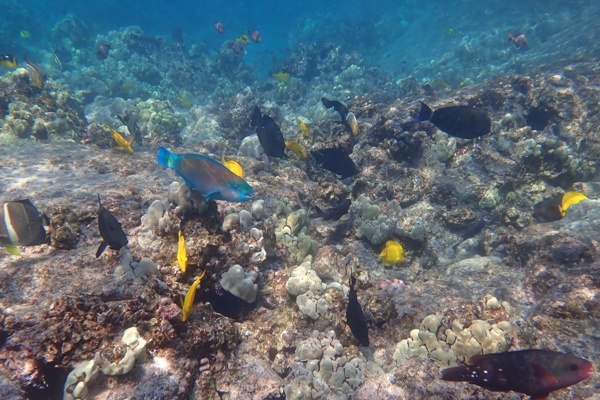
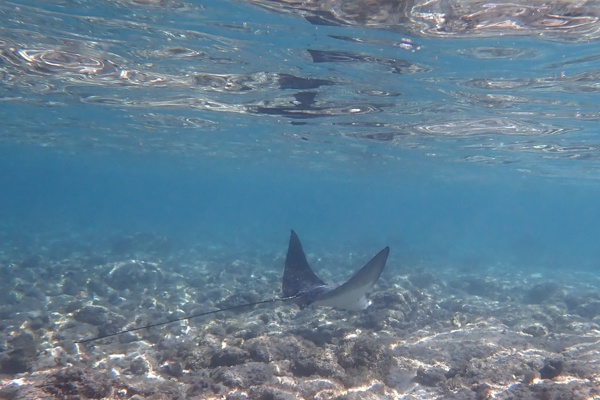
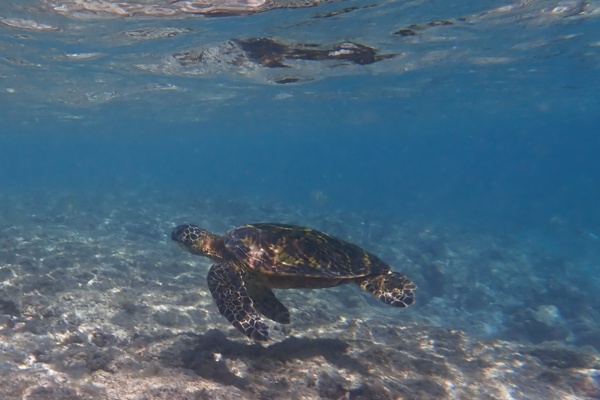
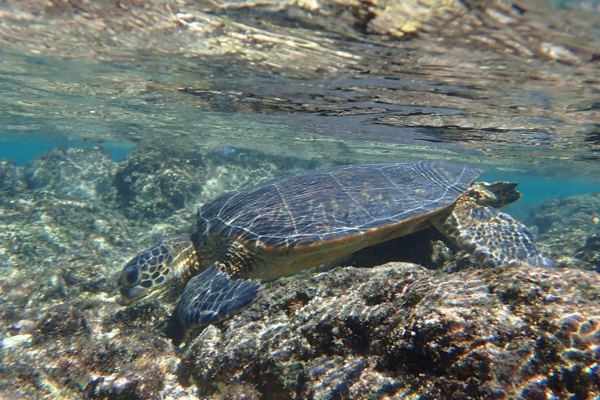
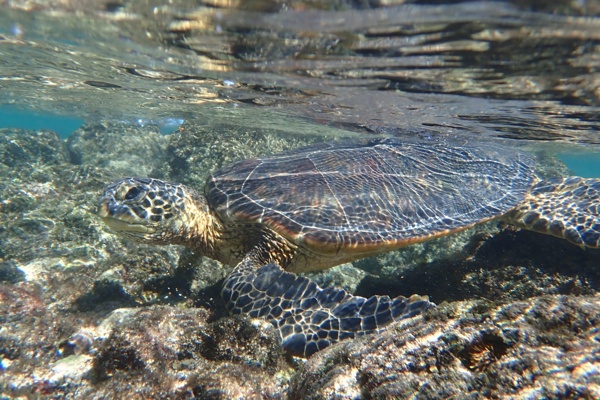
Incidentally, here's a list of places we visited while on the Island:
- Nanuku Inlet
- Mauna Lani Beach
- Lapakahi Historical Park
- Kapa'a State Park
- Mahukona Beach Park
- Puako Bay
- Pu'uhonua O Honaunau
- Manini Beach (Keylakekua Bay)
- Keylakekua Bay (near the Captain Cook Monument)
- Hapuna Beach
- Kalahuipua'a Lava Park
- Wailea Beach
- Kua Bay
- Waikoloa Beach
- Anchialine Ponds
- Kailua-Kona
So, we began this hike not knowing how long it was, and therefore not knowing how much water to bring. We each had approx 20oz of water (though Delphine's was 1/2 gone, as she'd been trying to stay hydrated on the trip).
We walked ~one mile and asked how much further and were told "one more mile". Well, this was a surprise, because (1) it was hot (2) the trail was exposed (3) it was quite a descent, in terms of elevation and (4) it became obvious that we didn't have enough water.
We almost turned back.
I was advised that I might be able to get some water by asking around at the bay, so we decided to continue on and take our chances.
When we got to the bay, nobody had any water they were willing to part with, and my older kid was nearly out of water (and was exhausted). I set her up in the shade to cool down and went snorkeling.
While taking photos of fish, I was still troubled by the water situation. Where am I going to find water down here? It finally dawned on me: the only people who might have extra water here are the people on boats. (Don't people on boats always have extra water?!) So I told Alina I'd be right back, and I swam to a boat.
I pulled off my mask, introduced myself, and explained my predicament. The owner of the boat was incredibly kind, and offered to give me two bottles of water (and as a bonus: some de-fogger for my snorkel mask). I thanked them profusely and delivered the water to my parched kid.
After snorkeling, we packed up and made our way up the trail. We rationed water pretty carefully (I didn't consume any, so we could conserve / all that trail running and hiking finally came in handy). As it turns out, it's 1,305' of elevation gain for those 2 miles .. that's quite a grade. We made it to the top just as the kids ran out of water: hot, thirsty, but happy to have avoided heatstroke.